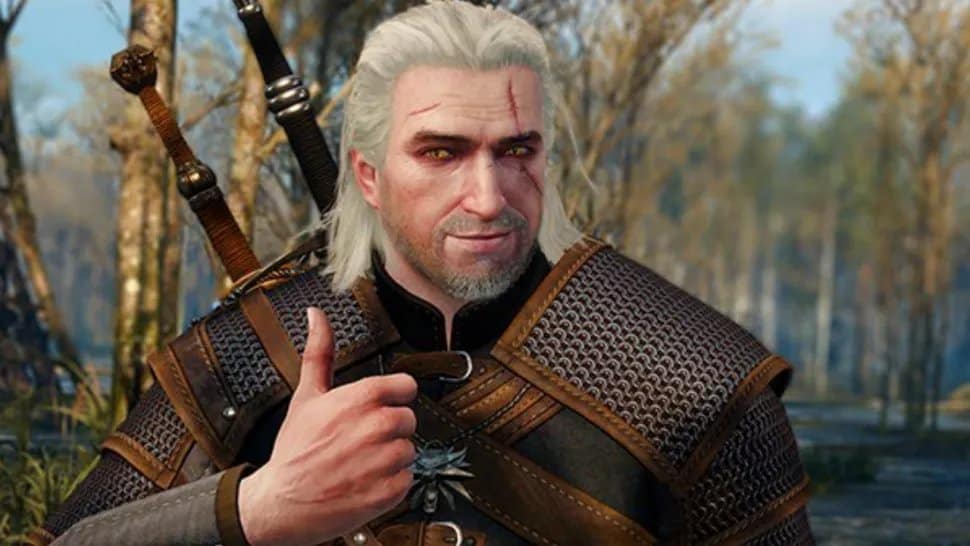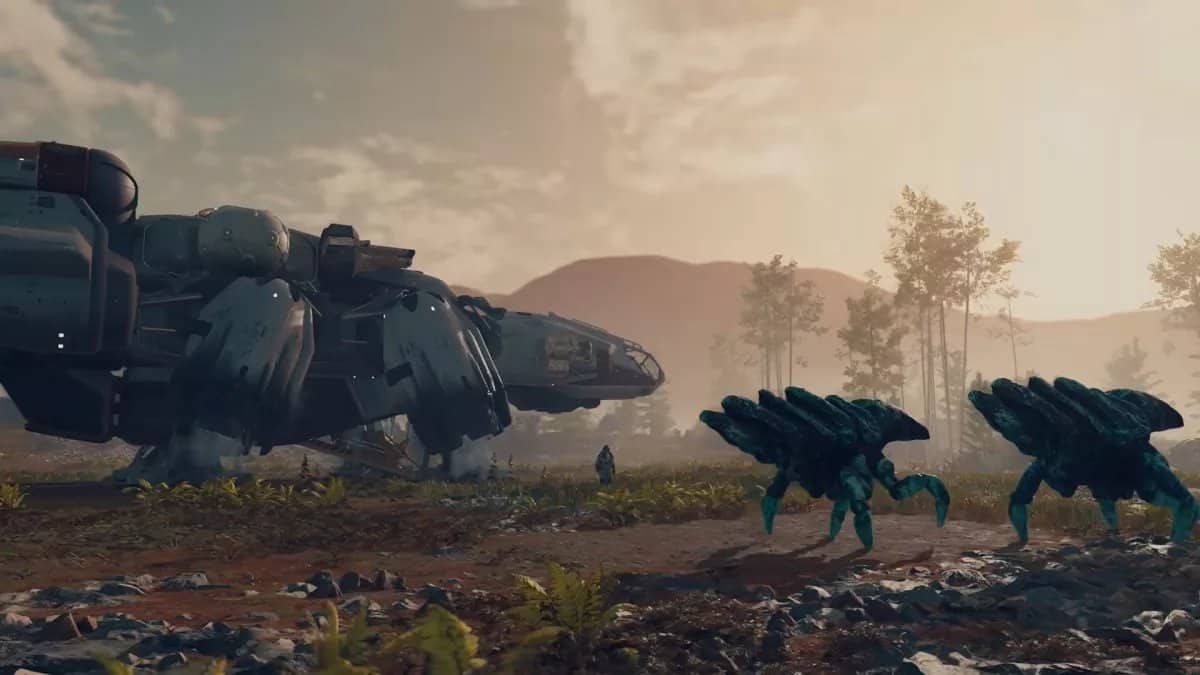You might expect The Witcher book series to be inspired by grand themes like politics, geography, or mythical creatures. After all, it’s beloved by fans, spawned hit video games, and has a successful Netflix adaptation. However, creator Andrzej Sapkowski reveals a surprisingly humble origin for his iconic series: the Polish language.
During a livestream with Fantastic talk(s), a YouTube channel hosted by Ukrainian writers discussing sci-fi and fantasy, Sapkowski explained that Polish, like German, has three genders. The word for “witch” in Polish, “wiedźma,” is feminine, but there’s no masculine equivalent. This linguistic gap sparked Sapkowski’s creativity, leading him to coin the term “wiedźmin,” meaning a male witch.
Interestingly, Sapkowski also admits that he didn’t initially envision a map for The Witcher’s world, known as the Continent. He deliberately avoided creating one to set his series apart from other fantasy novels. The first map was actually crafted by a Czech translator and later served as the foundation for all subsequent maps.
It’s remarkable to think that such a rich and expansive universe, including future installments like The Witcher 4: Polaris and seasons of Netflix’s adaptation, can trace its origins back to a single linguistic quirk in Polish.
You might expect The Witcher book series to be inspired by grand themes like politics, geography, or mythical creatures. After all, it’s beloved by fans, spawned hit video games, and has a successful Netflix adaptation. However, creator Andrzej Sapkowski reveals a surprisingly humble origin for his iconic series: the Polish language.
During a livestream with Fantastic talk(s), a YouTube channel hosted by Ukrainian writers discussing sci-fi and fantasy, Sapkowski explained that Polish, like German, has three genders. The word for “witch” in Polish, “wiedźma,” is feminine, but there’s no masculine equivalent. This linguistic gap sparked Sapkowski’s creativity, leading him to coin the term “wiedźmin,” meaning a male witch.
Interestingly, Sapkowski also admits that he didn’t initially envision a map for The Witcher’s world, known as the Continent. He deliberately avoided creating one to set his series apart from other fantasy novels. The first map was actually crafted by a Czech translator and later served as the foundation for all subsequent maps.
It’s remarkable to think that such a rich and expansive universe, including future installments like The Witcher 4: Polaris and seasons of Netflix’s adaptation, can trace its origins back to a single linguistic quirk in Polish.
You might expect The Witcher book series to be inspired by grand themes like politics, geography, or mythical creatures. After all, it’s beloved by fans, spawned hit video games, and has a successful Netflix adaptation. However, creator Andrzej Sapkowski reveals a surprisingly humble origin for his iconic series: the Polish language.
During a livestream with Fantastic talk(s), a YouTube channel hosted by Ukrainian writers discussing sci-fi and fantasy, Sapkowski explained that Polish, like German, has three genders. The word for “witch” in Polish, “wiedźma,” is feminine, but there’s no masculine equivalent. This linguistic gap sparked Sapkowski’s creativity, leading him to coin the term “wiedźmin,” meaning a male witch.
Interestingly, Sapkowski also admits that he didn’t initially envision a map for The Witcher’s world, known as the Continent. He deliberately avoided creating one to set his series apart from other fantasy novels. The first map was actually crafted by a Czech translator and later served as the foundation for all subsequent maps.
It’s remarkable to think that such a rich and expansive universe, including future installments like The Witcher 4: Polaris and seasons of Netflix’s adaptation, can trace its origins back to a single linguistic quirk in Polish.
You might expect The Witcher book series to be inspired by grand themes like politics, geography, or mythical creatures. After all, it’s beloved by fans, spawned hit video games, and has a successful Netflix adaptation. However, creator Andrzej Sapkowski reveals a surprisingly humble origin for his iconic series: the Polish language.
During a livestream with Fantastic talk(s), a YouTube channel hosted by Ukrainian writers discussing sci-fi and fantasy, Sapkowski explained that Polish, like German, has three genders. The word for “witch” in Polish, “wiedźma,” is feminine, but there’s no masculine equivalent. This linguistic gap sparked Sapkowski’s creativity, leading him to coin the term “wiedźmin,” meaning a male witch.
Interestingly, Sapkowski also admits that he didn’t initially envision a map for The Witcher’s world, known as the Continent. He deliberately avoided creating one to set his series apart from other fantasy novels. The first map was actually crafted by a Czech translator and later served as the foundation for all subsequent maps.
It’s remarkable to think that such a rich and expansive universe, including future installments like The Witcher 4: Polaris and seasons of Netflix’s adaptation, can trace its origins back to a single linguistic quirk in Polish.
You might expect The Witcher book series to be inspired by grand themes like politics, geography, or mythical creatures. After all, it’s beloved by fans, spawned hit video games, and has a successful Netflix adaptation. However, creator Andrzej Sapkowski reveals a surprisingly humble origin for his iconic series: the Polish language.
During a livestream with Fantastic talk(s), a YouTube channel hosted by Ukrainian writers discussing sci-fi and fantasy, Sapkowski explained that Polish, like German, has three genders. The word for “witch” in Polish, “wiedźma,” is feminine, but there’s no masculine equivalent. This linguistic gap sparked Sapkowski’s creativity, leading him to coin the term “wiedźmin,” meaning a male witch.
Interestingly, Sapkowski also admits that he didn’t initially envision a map for The Witcher’s world, known as the Continent. He deliberately avoided creating one to set his series apart from other fantasy novels. The first map was actually crafted by a Czech translator and later served as the foundation for all subsequent maps.
It’s remarkable to think that such a rich and expansive universe, including future installments like The Witcher 4: Polaris and seasons of Netflix’s adaptation, can trace its origins back to a single linguistic quirk in Polish.
You might expect The Witcher book series to be inspired by grand themes like politics, geography, or mythical creatures. After all, it’s beloved by fans, spawned hit video games, and has a successful Netflix adaptation. However, creator Andrzej Sapkowski reveals a surprisingly humble origin for his iconic series: the Polish language.
During a livestream with Fantastic talk(s), a YouTube channel hosted by Ukrainian writers discussing sci-fi and fantasy, Sapkowski explained that Polish, like German, has three genders. The word for “witch” in Polish, “wiedźma,” is feminine, but there’s no masculine equivalent. This linguistic gap sparked Sapkowski’s creativity, leading him to coin the term “wiedźmin,” meaning a male witch.
Interestingly, Sapkowski also admits that he didn’t initially envision a map for The Witcher’s world, known as the Continent. He deliberately avoided creating one to set his series apart from other fantasy novels. The first map was actually crafted by a Czech translator and later served as the foundation for all subsequent maps.
It’s remarkable to think that such a rich and expansive universe, including future installments like The Witcher 4: Polaris and seasons of Netflix’s adaptation, can trace its origins back to a single linguistic quirk in Polish.
You might expect The Witcher book series to be inspired by grand themes like politics, geography, or mythical creatures. After all, it’s beloved by fans, spawned hit video games, and has a successful Netflix adaptation. However, creator Andrzej Sapkowski reveals a surprisingly humble origin for his iconic series: the Polish language.
During a livestream with Fantastic talk(s), a YouTube channel hosted by Ukrainian writers discussing sci-fi and fantasy, Sapkowski explained that Polish, like German, has three genders. The word for “witch” in Polish, “wiedźma,” is feminine, but there’s no masculine equivalent. This linguistic gap sparked Sapkowski’s creativity, leading him to coin the term “wiedźmin,” meaning a male witch.
Interestingly, Sapkowski also admits that he didn’t initially envision a map for The Witcher’s world, known as the Continent. He deliberately avoided creating one to set his series apart from other fantasy novels. The first map was actually crafted by a Czech translator and later served as the foundation for all subsequent maps.
It’s remarkable to think that such a rich and expansive universe, including future installments like The Witcher 4: Polaris and seasons of Netflix’s adaptation, can trace its origins back to a single linguistic quirk in Polish.
You might expect The Witcher book series to be inspired by grand themes like politics, geography, or mythical creatures. After all, it’s beloved by fans, spawned hit video games, and has a successful Netflix adaptation. However, creator Andrzej Sapkowski reveals a surprisingly humble origin for his iconic series: the Polish language.
During a livestream with Fantastic talk(s), a YouTube channel hosted by Ukrainian writers discussing sci-fi and fantasy, Sapkowski explained that Polish, like German, has three genders. The word for “witch” in Polish, “wiedźma,” is feminine, but there’s no masculine equivalent. This linguistic gap sparked Sapkowski’s creativity, leading him to coin the term “wiedźmin,” meaning a male witch.
Interestingly, Sapkowski also admits that he didn’t initially envision a map for The Witcher’s world, known as the Continent. He deliberately avoided creating one to set his series apart from other fantasy novels. The first map was actually crafted by a Czech translator and later served as the foundation for all subsequent maps.
It’s remarkable to think that such a rich and expansive universe, including future installments like The Witcher 4: Polaris and seasons of Netflix’s adaptation, can trace its origins back to a single linguistic quirk in Polish.
You might expect The Witcher book series to be inspired by grand themes like politics, geography, or mythical creatures. After all, it’s beloved by fans, spawned hit video games, and has a successful Netflix adaptation. However, creator Andrzej Sapkowski reveals a surprisingly humble origin for his iconic series: the Polish language.
During a livestream with Fantastic talk(s), a YouTube channel hosted by Ukrainian writers discussing sci-fi and fantasy, Sapkowski explained that Polish, like German, has three genders. The word for “witch” in Polish, “wiedźma,” is feminine, but there’s no masculine equivalent. This linguistic gap sparked Sapkowski’s creativity, leading him to coin the term “wiedźmin,” meaning a male witch.
Interestingly, Sapkowski also admits that he didn’t initially envision a map for The Witcher’s world, known as the Continent. He deliberately avoided creating one to set his series apart from other fantasy novels. The first map was actually crafted by a Czech translator and later served as the foundation for all subsequent maps.
It’s remarkable to think that such a rich and expansive universe, including future installments like The Witcher 4: Polaris and seasons of Netflix’s adaptation, can trace its origins back to a single linguistic quirk in Polish.
You might expect The Witcher book series to be inspired by grand themes like politics, geography, or mythical creatures. After all, it’s beloved by fans, spawned hit video games, and has a successful Netflix adaptation. However, creator Andrzej Sapkowski reveals a surprisingly humble origin for his iconic series: the Polish language.
During a livestream with Fantastic talk(s), a YouTube channel hosted by Ukrainian writers discussing sci-fi and fantasy, Sapkowski explained that Polish, like German, has three genders. The word for “witch” in Polish, “wiedźma,” is feminine, but there’s no masculine equivalent. This linguistic gap sparked Sapkowski’s creativity, leading him to coin the term “wiedźmin,” meaning a male witch.
Interestingly, Sapkowski also admits that he didn’t initially envision a map for The Witcher’s world, known as the Continent. He deliberately avoided creating one to set his series apart from other fantasy novels. The first map was actually crafted by a Czech translator and later served as the foundation for all subsequent maps.
It’s remarkable to think that such a rich and expansive universe, including future installments like The Witcher 4: Polaris and seasons of Netflix’s adaptation, can trace its origins back to a single linguistic quirk in Polish.
You might expect The Witcher book series to be inspired by grand themes like politics, geography, or mythical creatures. After all, it’s beloved by fans, spawned hit video games, and has a successful Netflix adaptation. However, creator Andrzej Sapkowski reveals a surprisingly humble origin for his iconic series: the Polish language.
During a livestream with Fantastic talk(s), a YouTube channel hosted by Ukrainian writers discussing sci-fi and fantasy, Sapkowski explained that Polish, like German, has three genders. The word for “witch” in Polish, “wiedźma,” is feminine, but there’s no masculine equivalent. This linguistic gap sparked Sapkowski’s creativity, leading him to coin the term “wiedźmin,” meaning a male witch.
Interestingly, Sapkowski also admits that he didn’t initially envision a map for The Witcher’s world, known as the Continent. He deliberately avoided creating one to set his series apart from other fantasy novels. The first map was actually crafted by a Czech translator and later served as the foundation for all subsequent maps.
It’s remarkable to think that such a rich and expansive universe, including future installments like The Witcher 4: Polaris and seasons of Netflix’s adaptation, can trace its origins back to a single linguistic quirk in Polish.
You might expect The Witcher book series to be inspired by grand themes like politics, geography, or mythical creatures. After all, it’s beloved by fans, spawned hit video games, and has a successful Netflix adaptation. However, creator Andrzej Sapkowski reveals a surprisingly humble origin for his iconic series: the Polish language.
During a livestream with Fantastic talk(s), a YouTube channel hosted by Ukrainian writers discussing sci-fi and fantasy, Sapkowski explained that Polish, like German, has three genders. The word for “witch” in Polish, “wiedźma,” is feminine, but there’s no masculine equivalent. This linguistic gap sparked Sapkowski’s creativity, leading him to coin the term “wiedźmin,” meaning a male witch.
Interestingly, Sapkowski also admits that he didn’t initially envision a map for The Witcher’s world, known as the Continent. He deliberately avoided creating one to set his series apart from other fantasy novels. The first map was actually crafted by a Czech translator and later served as the foundation for all subsequent maps.
It’s remarkable to think that such a rich and expansive universe, including future installments like The Witcher 4: Polaris and seasons of Netflix’s adaptation, can trace its origins back to a single linguistic quirk in Polish.





